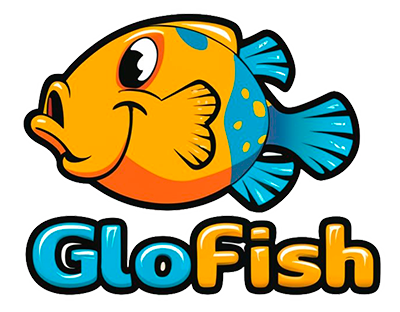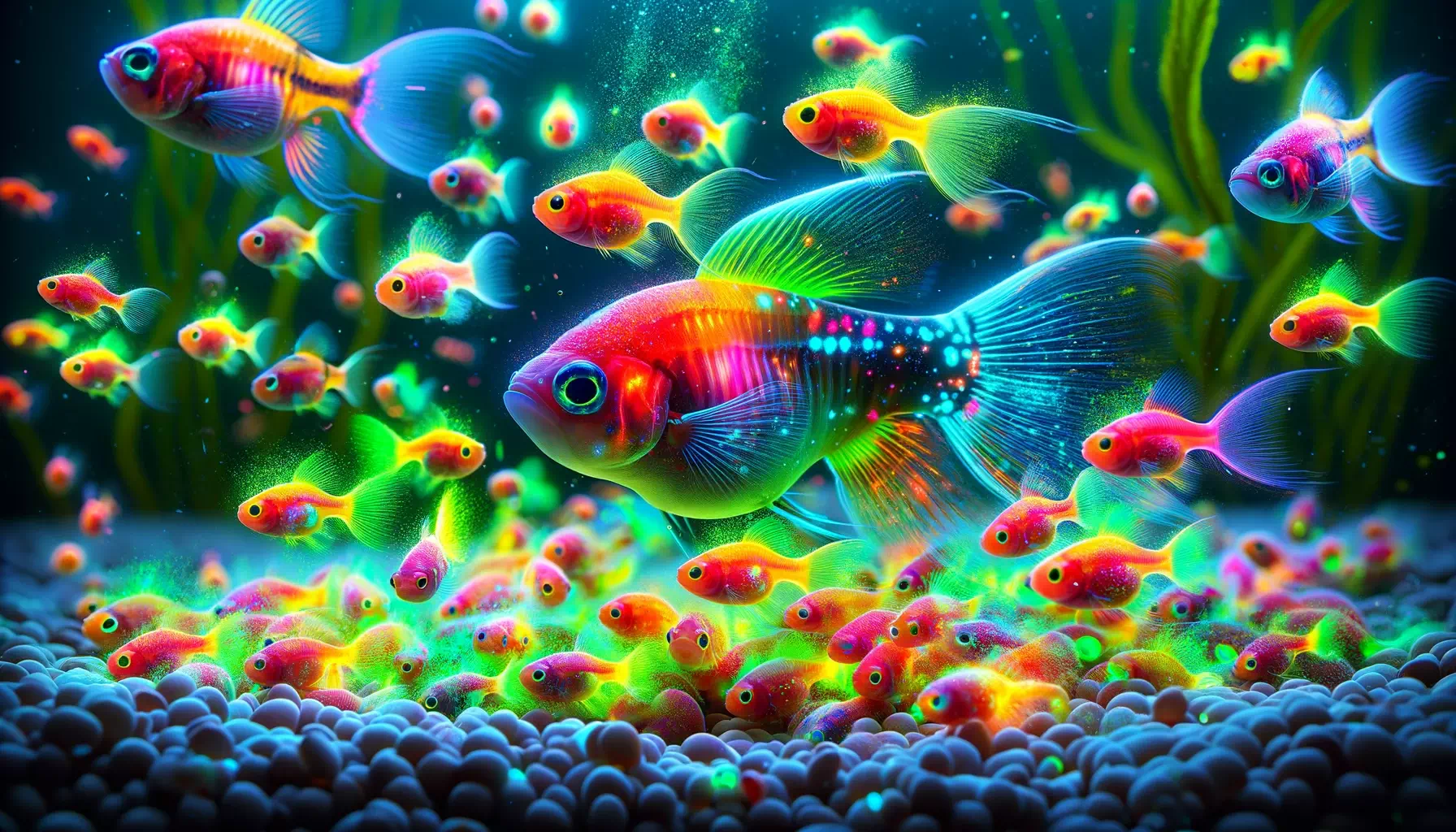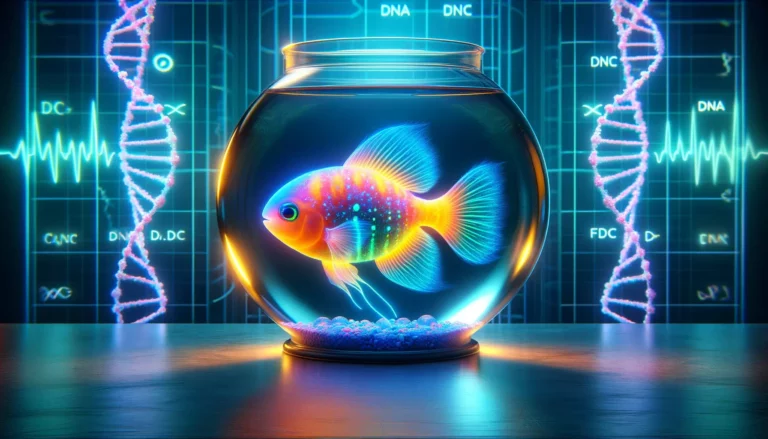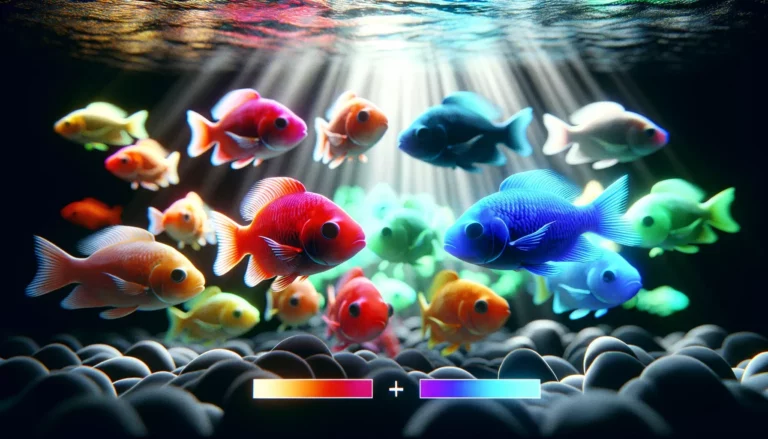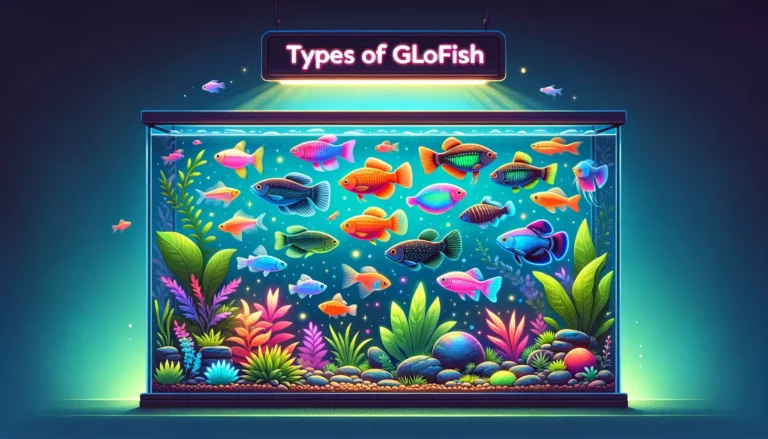The Science Behind GloFish’s Vibrant Colors
GloFish owe their vibrant colors to specific genes from marine organisms. These genes produce fluorescent proteins. Scientists use biotechnology to insert these genes into fish embryos. The genes come from jellyfish and coral species. For instance, the green GloFish carries a gene from a jellyfish. This gene produces the green fluorescent protein (GFP). Red and orange GloFish have genes from sea corals. These genes produce red and orange fluorescent proteins (RFP and OFP).
These modifications occur at the embryonic stage. The inserted genes integrate into the fish’s DNA. This ensures the color gets passed to future generations. The process involves precision and careful genetic mapping. This helps scientists target the right spots in the genome. The goal is to achieve bright, consistent coloration in the fish.
Environmental Interactions of GloFish vs. Non-Modified Fish

GloFish are essentially similar to their non-modified counterparts in behavior. Their genetic modifications do not significantly alter their environmental interactions. They exhibit similar feeding, breeding, and social behaviors. Their care requirements in aquariums are also alike. However, the bright colors of GloFish might affect their interactions in a few ways.
In a natural setting, their bright colors could make them more visible. This could increase predation risks. But in home aquariums, this is less of a concern. Their vibrant colors do not seem to affect their social hierarchy or mating.
Their interaction with light is notably different. Under UV or blue light, their colors become more pronounced. This makes them a popular choice for visually striking aquarium setups.
Long-Term Health Effects in GloFish due to Genetic Modifications
Research indicates that genetic modifications in GloFish do not cause significant long-term health effects. These fish have similar lifespans and health profiles to their non-modified counterparts. They show no signs of additional stress or health issues due to their fluorescence.
However, it’s important to provide proper care and a suitable environment. This includes appropriate tank size, water quality, and diet. Like all aquarium fish, their health depends largely on their care. Neglect can lead to stress and health issues, but this is not specific to their genetic modifications.
Regular monitoring and preventive care are key. This helps ensure GloFish live a healthy and full life. Owners should observe for any signs of distress or illness. Early detection and treatment are crucial for any aquarium fish’s health.
Public Perception of Ethical Implications in Genetic Modification of Fish

Public opinion on the ethics of genetically modifying GloFish for aesthetics is divided. Some people view it as a harmless enhancement of natural beauty. They argue that if it’s safe and regulated, there’s no ethical issue. These proponents often see GloFish as an educational tool. They can help in teaching genetics and biotechnology.
However, others raise concerns about animal welfare and nature’s integrity. They question the morality of altering an animal’s genetics for human pleasure. Critics worry about the potential impact on natural ecosystems. They fear accidental release of these fish into the wild.
Educational campaigns can help inform the public. These should address the science, safety, and purpose behind GloFish. Transparency in these areas can help shape informed opinions. It’s a complex issue blending science, ethics, and personal values.
Regulations and Legal Considerations for Breeding and Selling GloFish
GloFish are subject to a variety of regulations and legal considerations. In the United States, the FDA concluded they don’t pose a risk. Therefore, they don’t require special regulation. However, some states have their own rules. For instance, California initially banned GloFish but later allowed their sale under specific conditions.
GloFish patents and trademarks also play a role. The company that developed GloFish holds patents. This restricts unauthorized breeding and sale. Breeders and sellers must comply with these intellectual property rights.
International laws vary. Some countries have stricter regulations on genetically modified organisms (GMOs). Importers and sellers must navigate these legal landscapes. They must ensure compliance with both local and international laws.
Compatibility of GloFish with Other Fish Species in Aquariums

Generally, GloFish can coexist safely with other non-aggressive aquarium fish. They are similar to their non-modified counterparts in behavior and needs. Thus, they can usually live with other community fish. However, compatibility depends on species-specific behaviors and tank conditions.
It’s crucial to consider size, temperament, and environmental needs. For example, a GloFish that is a modified zebrafish should not be kept with large, aggressive fish. Similarly, GloFish should be housed in conditions suitable for their specific species.
Tank size, water quality, and dietary needs are important. Overcrowding can lead to stress and aggression. Proper tank management ensures a harmonious environment for all fish. Research and careful planning are key to successful cohabitation in an aquarium.
Contributions of GloFish to Scientific Research and Future Potential
GloFish have been instrumental in advancing scientific research, particularly in genetics and developmental biology. Initially, their creation aimed at detecting environmental pollutants. The idea was that they would glow in the presence of toxins. This application has significant implications for environmental monitoring.
In medical research, GloFish models help in understanding diseases. Their transparent bodies allow for easy observation of disease progression. Scientists use them to study cancer, birth defects, and heart diseases. This research can lead to breakthroughs in human medicine.
Looking ahead, GloFish have potential in neuroscience and aging studies. Their genetic simplicity makes them ideal for complex genetic experiments. They can help in understanding brain functions and the aging process. The possibilities for future studies are vast and promising.
Genetic Engineering Advancements Leading to GloFish Creation and Future Innovations
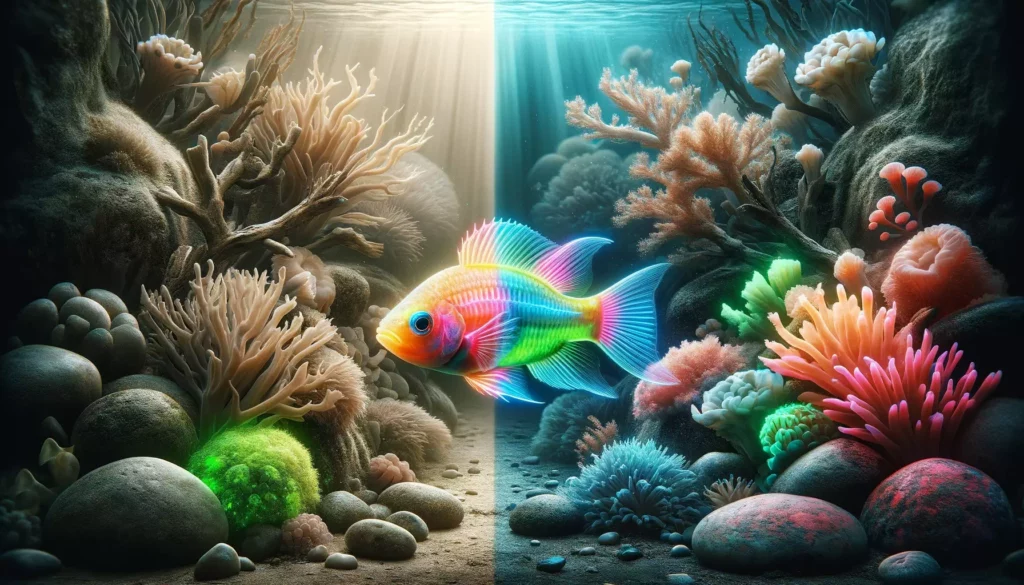
The creation of GloFish was a milestone in genetic engineering, showcasing the practical application of DNA manipulation. The process involved inserting fluorescent genes from jellyfish and coral into fish embryos. This technique, known as transgenesis, was a significant advancement. It demonstrated the possibility of transferring genes between species.
The technology behind GloFish has evolved. Now, CRISPR/Cas9 gene-editing technology offers more precision. This advancement could lead to more targeted genetic modifications. It raises possibilities for creating animals with specific traits for research, agriculture, or therapeutic purposes.
In the future, we might see more genetically modified animals. These could be tailored for specific roles in research or environmental management. However, ethical and regulatory considerations will shape this field’s trajectory.
GloFish Response to Aquarium Lighting and Color Showcase
GloFish are renowned for their vibrant colors, which are most vivid under specific lighting conditions. Under standard white aquarium lighting, their colors are visible but subdued. However, under blue or black light (ultraviolet light), their fluorescent colors truly shine. This is because the UV light interacts with the fluorescent proteins in their bodies, causing them to glow brightly.
For the best visual effect, a combination of white and blue lights is often recommended. This setup enhances both the natural coloration of the fish and the fluorescent glow. LED lights specifically designed for GloFish tanks can provide this combination. These lights not only showcase the fish’s colors but also support a healthy environment for them.
Care Requirements Variations Among Different GloFish Color Varieties
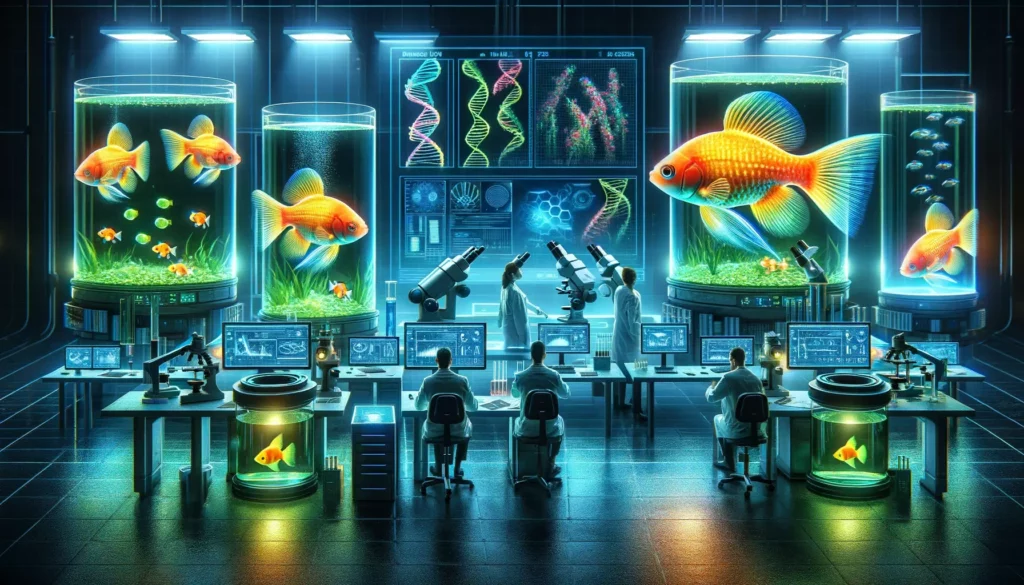
The care requirements for different color varieties of GloFish are generally the same, as they are more species-dependent than color-dependent. Regardless of color, GloFish need a well-maintained tank with proper filtration, temperature control, and regular cleaning. The primary factor in their care is the species of the GloFish, whether they are danios, tetras, or barbs.
All GloFish need a balanced diet suitable for their species. They also require an environment that mimics their natural habitat. This includes appropriate plants, hiding spaces, and tank mates. The color of the GloFish does not change these basic care needs.
It’s important to research the specific needs of the GloFish species you have. Proper care will ensure their health, longevity, and the brightest possible coloration.
